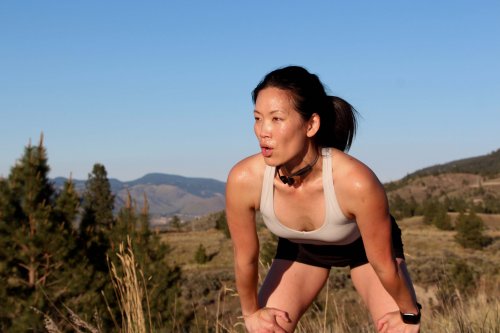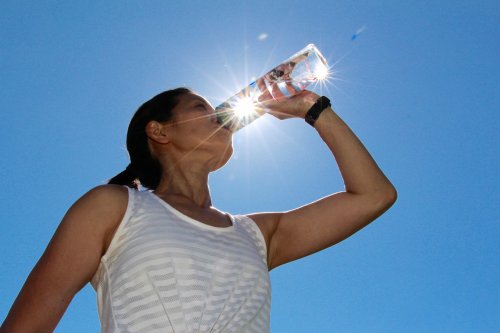The long, hot days of summer have arrived and many of us are ready to embrace the sunny outdoors for our exercise and activity. A little caution and planning for the heat will go a long way to ensure that we can still get a great workout in and enjoy outdoor training safely.

Exercise-related Heat Illness
Exercise-related heat illness, including heat exhaustion and heat stroke, are two similar, but progressively worsening conditions which should be taken seriously. Our body functions optimally at 37°C but if elevated a few degrees by external factors (e.g., heat and humidity) or internal factors (e.g., exercise exertion), danger arises and our bodies go into emergency mode.
Heat Exhaustion
If we exert ourselves in the heat and elevate our core body temperature to 40°C, heat exhaustion can occur. Our bodies will do what they can to maintain homeostasis by trying to lower our core temperature and force us to stop causing ourselves harm.
Symptoms of heat exhaustion:
- nausea or vomiting
- headache
- dizziness
- weakness
- muscle cramps
- heavy sweating
- pale or cold skin
- elevated heart rate
Heat Stroke
If you continue to exert your body in the heat and your core temperature rises above 40°C, signs of heat stroke can set in, indicating a life-threatening situation. Emergency medical care should be sought immediately if you note signs of heat stroke.
Symptoms of heat stroke:
- fainting
- confusion
- seizure
- heart rhythm problems
- not sweating
- shortness of breath
- visual problems
- not responsive
Contributing Factors to Exercise-related Heat Illness
The inability to dissipate heat efficiently when exercising can elevate your risk for heat illness.
Factors which make it more challenging for you to dissipate heat:
- Being unaccustomed to exercising in a hot environment
- Being deconditioned
- Dehydration
- Consuming alcohol before exercising
- Obesity
- Having an infection
Decrease Your Risk for Exercise-related Heat Illness
Planning is the most effective way to minimize the stress we place on ourselves when exercising in the heat. Try this:
- Check the temperature and forecast. Take special note of the “feels like” temperature as this takes humidity into account. Planning your workouts and outdoor activities based on the weekly forecast can also help you get the most out of your efforts. Plan more intense outdoor activities on cooler days or outside the hottest hours of the day. On days and hours when the mercury is running higher, focus on less intense activities or avoid the heat altogether and exercise indoors.
- Gradually acclimatize yourself over 10–14 days to exercising in the outdoor heat if you are not used to it. Gradually build up your intensity and duration in the heat and supplement with workouts indoors as needed.
- Change it up. Instead of running or walking on those scorching city sidewalks, seek out less radiant surfaces such as tree-covered dirt trails around town, or head to a local lake or mountain for a hike, trail run, or paddle and enjoy the cooler temps.
- Respect your fitness level. If you are new to exercise in general, your tolerance to the heat while exercising can be lower. Take frequent breaks and pace yourself.
- Dress for the weather. New fabrics and design in athletic wear can not only help protect us from the rays of the sun, but also allow for more efficient cooling via sweat evaporation. Light-coloured, loose fitting, moisture-wicking outfits and hats shade our bare skin from the sun to guard against sunburn and the direct radiant heat from the sun.

…and Hydrate, Hydrate, Hydrate!
With one glance at your friends on a hot day you know that our individual sweat rates can vary widely. We lose between 0.5 to 2.5 litres/hour in fluid from sweat depending on factors such as exercise intensity and duration, age, gender, fitness level, and individual sweat rate.
If you have a consistent exercise regime you can weigh yourself before and after exercise to calculate how much fluid you lose, then create your own individual hydration plan.
Taking steps to prevent heat-related illness during the summer months will not only help you to continue building up your fitness levels this season, but also let you safely enjoy the outdoors with friends and family once again.
TAMMY UYEDA, BSc(PT) is a clinical Physiotherapist, certified group fitness instructor and owner of FitSpark Health. She is passionate about motivating and inspiring people to an active lifestyle and can usually be found shuttling her three pre-teen and teenaged sons between soccer fields. She shares workouts, exercise tips, and her favourite fitness-related finds on her Instagram page @tinkam
Article was published in The Good Life magazine.
